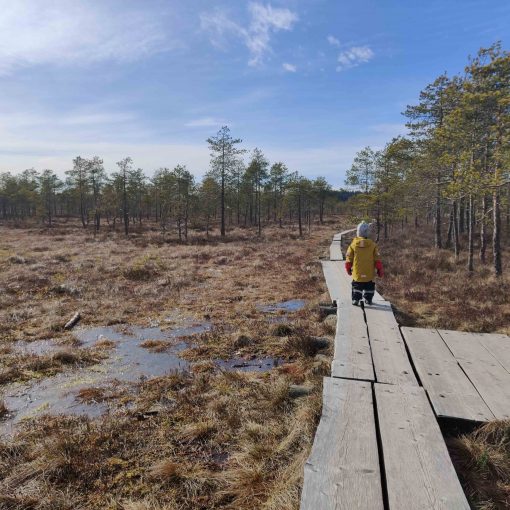![[Alt-teksti: ruskean värinen karhu kävelee joen varrella.]](https://blogit.lab.fi/labfocus/wp-content/uploads/sites/8/2025/10/LAB-FOCUS_397_2025_The-wild-side-of-health-Nursing-at-the-human-wildlife-crossroad-1.jpg)
Human interaction with wildlife encompasses a wide range of activities, from recreational outings and sporting activities to daily routines such as farming and commuting. While many of these encounters are safe, they can sometimes result in serious injuries or even fatal accidents. The growing concern of Wild Animal-Related Injuries (WARIs), their impact on global health and the crucial role of healthcare professionals, particularly nurses in managing these injuries, must be paid attention to.
The Growing Challenge and range of Wild Animal-Related Injuries
WARIs occur in diverse settings – from densely populated urban spaces to remote rural areas and tropical forests (Muehlenbein et al. 2020). However, they are particularly burdensome in developing countries and agrarian communities. These regions are often located near natural habitats, increasing the likelihood of human-wildlife interactions. Furthermore, these areas are also frequently marked by limited healthcare infrastructure, which all too frequently negatively impacts the outcomes of the injuries sustained. (Mitchell et al. 2011; Gylioma et al. 2013)
Wildlife-related injuries encompass a wide range of causes and effects. Common mechanisms include biting, scratching, trampling, goring, mauling, and stinging (Hioki & Inaba 2021). Species involved can range from large mammals, such as felines and bears to smaller aquatic fauna, namely jellyfish. The severity of the injuries also varies broadly: from minor ulcers and ecchymosis to multiple fractures and life-threatening traumas (Girardi 2025).
Moreover, the danger is not limited to physical harm. Wild animals can also transmit infections, causing psychological trauma which can lead to long-term health complications. As a result, both direct and indirect consequences of WARIs carry a high burden of morbidity and, in severe cases, mortality (Gylioma et al. 2013, 2; Conway et al. 2022, 2.)
![[Alt-teksti: lähikuva harmaasta käärmeestä kerällä maassa.]](https://blogit.lab.fi/labfocus/wp-content/uploads/sites/8/2025/10/LAB-FOCUS_397_2025_The-wild-side-of-health-Nursing-at-the-human-wildlife-crossroad-2.jpg)
Snake Bites: A Tragic Example
One of the most widespread and fatal forms of WARI is snake bites. It is often an overlooked health issue affecting children and poor rural communities in low-income countries across Africa, Asia, and Latin America. According to WHO (2023), an estimated 2.5 million people worldwide are bitten by envenoming snakes each year. Of these, between 81,410 and 137,880 die annually despite the existence of effective antivenoms. The high fatality rate is primarily due to inadequate healthcare infrastructure, the inaccessibility of antivenoms, and the often-prohibitive cost of treatment. (World Health Organization, 2023).
The Role of Healthcare Professionals: A Nursing Perspective
Nurses play an essential role in the prevention, management, and rehabilitation of patients suffering from WARIs. Firstly, nurses must be well-versed in endemic dangerous wildlife and the mechanisms of injury associated with different species. Accurate identification of the animal and the nature of the injury enable timely and appropriate treatment. (Kirtland et al. 2022,1; de Carvalho dos Santos et al., 2023, 15).
Secondly, pain management and wound care as nursing interventions are integral to reducing complications and improving long-term recovery. In addition, nurses also offer the first line of psychological support which is vital given the emotional and mental trauma that may follow an attack by a wild animal. (de Carvalho dos Santos et al., 2023, 1-14.)
Finally, beyond clinical care, nurses also play a critical role in education and community outreach. Informing communities about the risks of encountering wild animals, proper safety precautions, and how to respond in the event of injury is essential for preventing and mitigating the severity of future accidents. (de Carvalho dos Santos et al., 2023, 7.)
Enhancing Global Health Through Nursing
With human-wildlife interactions continuing to intensify globally, Wild Animal-Related Injuries are poised to become an increasingly urgent healthcare concern. Addressing these challenges requires strengthening clinical guidelines, expanding nursing knowledge, and promoting community education (Girardi 2025). These efforts are essential to improving patient outcomes, reducing the global impact of WARIs, and supporting safer coexistence between humans and wildlife.
Authors:
Myriam Girardi is a graduate paramedic nurse student at LAB University of Applied Sciences
Sini Hämäläinen works as a Senior Lecturer and researcher of Diverse and Inclusive Working Life – research group at LAB University of Applied Sciences
References:
Conway, S., Rea, R.V., Hesse, G., MacPhail, C., von der Gonna, A. & Spooner D. 2022. Exploratory analysis of physical and emotional impacts and use of healthcare services following moose and deer vehicle collisions in north-central British Columbia. Journal of Transport and Health, Vol. 24, 101333. Retrieved on 10 February 2025. Available at DOI https://doi.org/10.1016/j.jth.2022.101333
De Carvalho dos Santos, R., de Oliveira dos Santos, D., Ferreira da Silva, M.F.A. & Monteiro da Silva, M. 2023. The role of the nurse in the face of snakebite victims in pre-hospital and intra-hospital accidents. A Look at Development. Retrieved on 16 July 2024. Available at DOI https://doi.org/10.56238/alookdevelopv1-197
Gilyoma, J. M., Mabula, J. B. & Chalya, P. L. 2013. Animal-related injuries in a resource-limited setting: experiences from a Tertiary health institution in northwestern Tanzania. World Journal of Emergency Surgery, Vol. 8, (7). Retrieved on 13 Novembre 2024. Available at DOI https://doi.org/10.1186/1749-7922-8-7
Girardi, M. 2025. From scratches to smashes: examining species-specific injuries from wild animal encounters and their medical impact : a systematic literature review. Bachelor’s thesis. LAB University of Applied Sciences. Retrieved on 08 October 2025. Available at https://urn.fi/URN:NBN:fi:amk-2025100225514
Hioki, A. & Inaba, R. 2021. Occupational fatalities due to mammal-related accidents in Japan, 2000-2019. Wilderness & environmental medicine, Vol. 32 (1), 19-26. Retrieved on 5 February 2025. Available at DOI https://doi.org/10.1016/j.wem.2020.09.010
Kirtland, J., Tremoleda, J.L. & Trivedy, C. 2024. Traumatic injury patterns in human from large feline predators: A systematic review and descriptive analysis. Trauma, Vol. 26 (1), 28-42. Retrieved on 10 February 2025. Available at DOI https://doi-org.ezproxy.saimia.fi/10.1177/14604086221123307
Mitchel, K. B., Kotecha, V. R. & Chandika, A. 2011. Bush animal attacks: management of complex injuries in a resource-limited setting. World Journal of Emergency Surgery, Vol 6, 43. Retrieved on 11 November 2024. Available at DOI https://doi.org/10.1186/1749-7922-6-43
Muehlenbein, M.P., Angelo, K.P., Schlagenhauf, P., Chen, L., Grobush, M.P., Gautret, P., Duvignaud, A., Chappuis, F., Kain, K.C., Bottieau, E., Epelboin, L., Shaw, M., Hynes, N., Hamer, H.D. & GeoSentinal Surveillance Network. 2020. Traveller exposure to animals: a GeoSentinel Analysis. Journal of Travel Medicine, Vol. 27 (7). Retrieved on 10 February 2025. Available at DOI https://doi.org/10.1093/jtm/taaa010
World Health Organization, WHO, 2023. Snakebite envenoming. Retrieved on 7 July 2025. Available at https://www.who.int/news-room/fact-sheets/detail/snakebite-envenoming
Picture 1. Pixabay 2025. Bear walking next to stream. Retrieved on 14 October 2025. Available at https://pixabay.com/photos/nature-animals-brown-bear-980120/
Picture 2. Pixabay 2025. Rihaij. Snake. Retrieved on 14 October 2025. Available at: https://pixabay.com/photos/line-grass-snake-natter-reptile-1468686/




